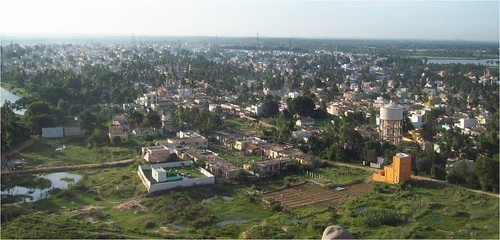/sub-categories/data
Data
River water quality data by Central Pollution Control Board (2005)
Posted on 19 Mar, 2013 06:41 PMAgainst this backdrop, this document by the Central Pollution Control Board (CPCB) elaborates on the river water quality in India. The Central and State Pollution Control Boards / Pollution Control Committees in Union-Territories of India are responsible for restoration and maintenance of the wholesomeness of aquatic resources.
Accelerated Irrigation Benefits Programme given near-exclusive priority in 12th five year plan, but will it solve India’s water problems?
Posted on 16 Mar, 2013 09:04 PMThere is a palpable sense of a looming water crisis in India. Conflicts across competing users and uses are on the rise. In the irrigation sector, it is widely felt that “paucity of resources and poor performance of existing major and medium irrigation systems are the two main problems”(1).

Mapping potential groundwater zones using remote sensing and GIS techniques
Posted on 01 Mar, 2013 11:43 AMAuthor: K.M.Seenivasan
Influence of anthropogenic contamination on fluoride concentration in groundwater: A study of Mulbagal town, Kolar district, Karnataka
Posted on 15 Feb, 2013 04:53 PMGroundwater contamination is a serious, but relatively ignored issue in the country. This contamination occurs in either through geogenic or anthropogenic means. Fluoride contamination is one such example of geogenic contamination that is widely found in the Kolar district of Karnataka. However, the fluoride levels in the town of Mulbagal are lower than those in the surroundings. Earlier, a study was conducted on the impact of pit toilets on the groundwater in the area. The present paper investigates the presence of any link between these two phenomena.
Handbook for flood protection, anti-erosion and river training works by Central Water Commission (2012)
Posted on 13 Feb, 2013 09:43 PMThis handbook by Central Water Commission aims to provide necessary guidance to the field engineers in the state and central for design, appraisal, construction and monitoring of the flood management works covering all the relevant BIS codes, design manuals, guidelines, technical specifications for construction materials and practices etc. to meet new challenges in the flood management in India.
Guidelines for decentralized wastewater management by Ministry of Urban Development (2012)
Posted on 12 Feb, 2013 07:36 PMThis guideline is prepared by the Centre of Excellence in the area of Decentralized Wastewater Management, in the Department of Civil Engineering at Indian Institute of Technology, Madras, which comes under Ministry of Urban Development
State-wise data on damage caused due to floods during 1953-2011- A compilation by Central Water Commission
Posted on 04 Feb, 2013 02:05 PMFloods/heavy rains can cause a severe and irreversible damage to human lives, property both public and private, and livestock. Since floods are one of the frequent natural calamities faced by India, the loss incurred by it is huge.
Environment statistics - A compendium by the Ministry of Statistics and Programme Implementation (2012)
Posted on 02 Feb, 2013 12:24 PMThe Ministry of Statistics and Programme Implementation (MoSPI) has come up with a Compendium of Environment Statistics 2012, the thirteenth edition of the series, which started in 1997. The compendium aims at providing high quality statistical information to improve knowledge of the environment, to support evidence-based policy and decision making, and to provide information for the general public, as well as for specific user groups. The statistics are multidisciplinary and cross-cutting, involving numerous sources and stakeholders.
Understanding how to predict where the next landslide will happen in Sikkim - An analysis using the status report for initiating landslide studies by the Wadia Institute of Himalayan Geology
Posted on 29 Jan, 2013 01:57 PMThis report presents information about the status of landslides in Sikkim. It was commissioned by the Department of Science and Technology and authored by the Wadia Institute of Geology. It draws upon several archives including that of the Directorate of Geology and Mining, Government of Sikkim. The report also presents recommendations for preparing an action plan for undertaking landslide studies.